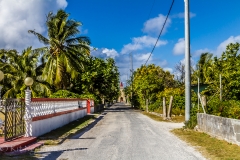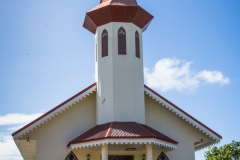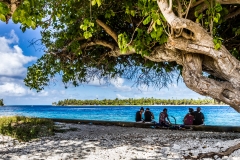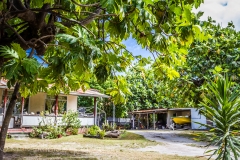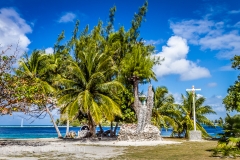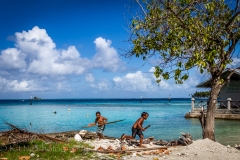July 15-18, 2014
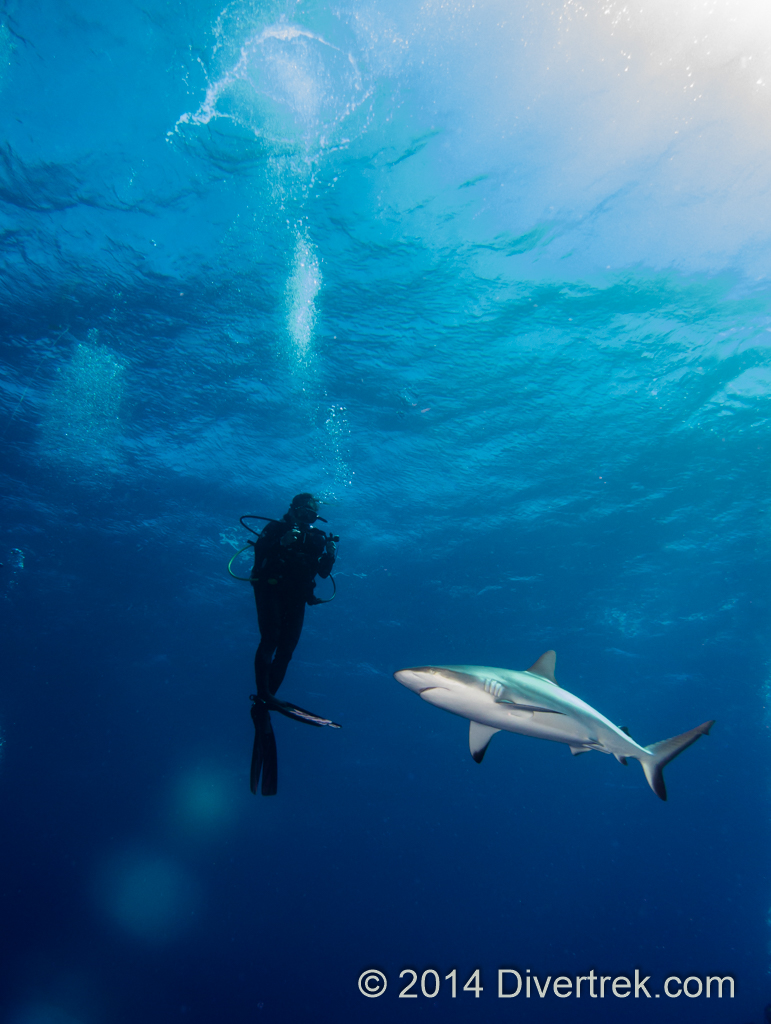
On the second part of our trip we went looking specifically for the bigger animals that Rangiroa is famous for: sharks, manta rays, marlin, dolphins, and huge schools of barracuda and Jacks. And we did see them all, including a Lemon, Tiger, Silvertips, and plenty of Grey Reef sharks.
The first thing that you will notice about Rangiroa is that it’s much more developed than Fakarava. However, it’s still low key, and it hasn’t become spoiled by being “touristy”. One does wonder what else you would do here if you weren’t a diver though.
Because we came to photograph sharks, we did three dives at the “Blue”, which starts at the same place as the “L’Eolienne, or the Windmills” (see the dive site map below). Here as the name implies, you’re in the deep blue ocean. These are baited dives, where chunks of fish are put into a bait cage at about 50 ft. You just never know what’s going to show up- usually Grey Reef sharks, or Silkys, but sometimes Silvertips or larger sharks.
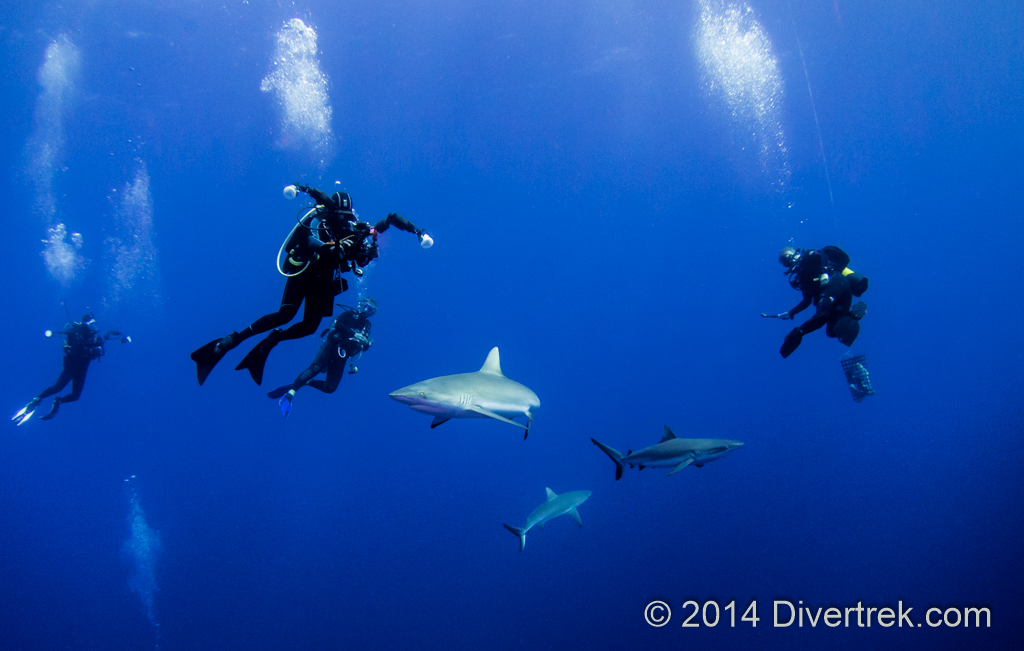
On one dive we had six Grey Reef sharks swimming around us, approaching closely and checking us out. They never acted aggressively toward us in any way. When they felt relaxed enough and had had enough of us, they tore open the bait ball with a feeding frenzy. Then left.

On another Blue dive we had only two Grey Reefs show up. They had to be encouraged to eat the bait by picking at the bait ball with a knife. On the third dive, only one Grey Reef showed up. But it acted erratically and left after only a few minutes. The dive guide “Pitou” (Frederick) said this was a probably a sign that something larger was lurking out there-possibly a Tiger or Great Hammerhead- the only animals that will prey on Grey Reef sharks. Pitou said that kind of “poor showing” rarely happens.

As you might expect, Rangiroa also has a “Sharkwall”. On the plus side it reputedly has more sharks than Fakarava, but their much deeper- from 120’to about 150′. Depending on your schedule, do it on an incoming flood when they amass in greater numbers. I did it during slackwater at 144′, and I only counted eight sharks, and they were deeper down still. Be aware that they will only take divers who are rescue qualified (or above) on this dive, otherwise you will have to hover at a shallower depth and look a considerable distance down.
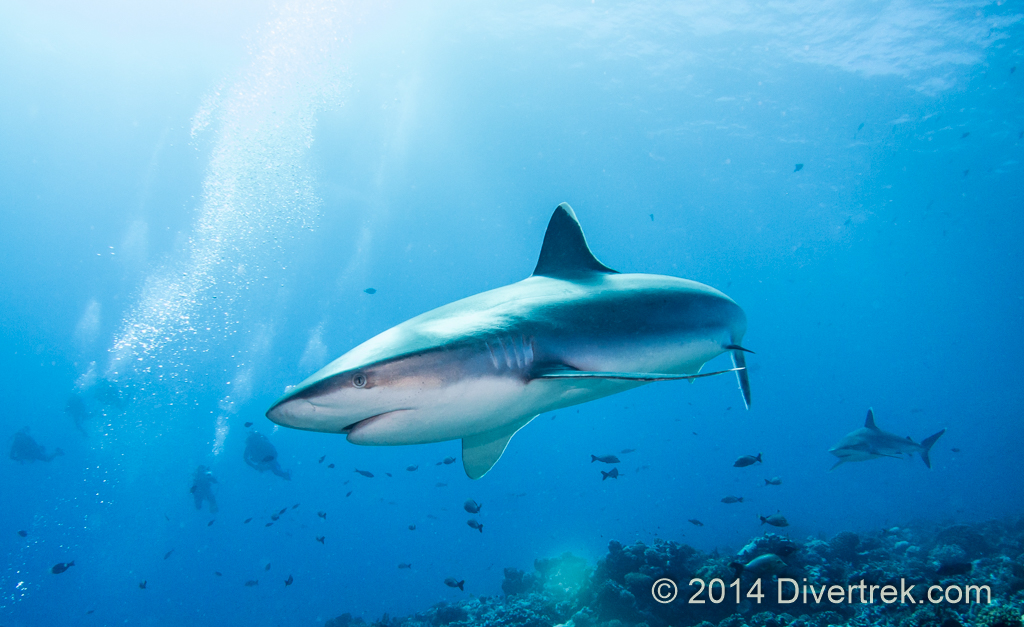
The neighbouring Avatoru pass, which is not as deep as Tiputa, has an exciting shark dive. There you can come face to face (literally) with Silver Tip reef sharks, which look like Grey reefs, only much bigger and bulkier. Since they are usually a deeper water reef shark, they have been accustomed to being teased up with bait. This dive takes place on a nice reef in only about 30′ of water, which ensures a nice long dive with lots of photographic opportunities. The divemaster places some bait in a coral head that is covered with a rock. After awhile, the DM removes the rock, the sharks get noticeably excited, and they rush for their reward.
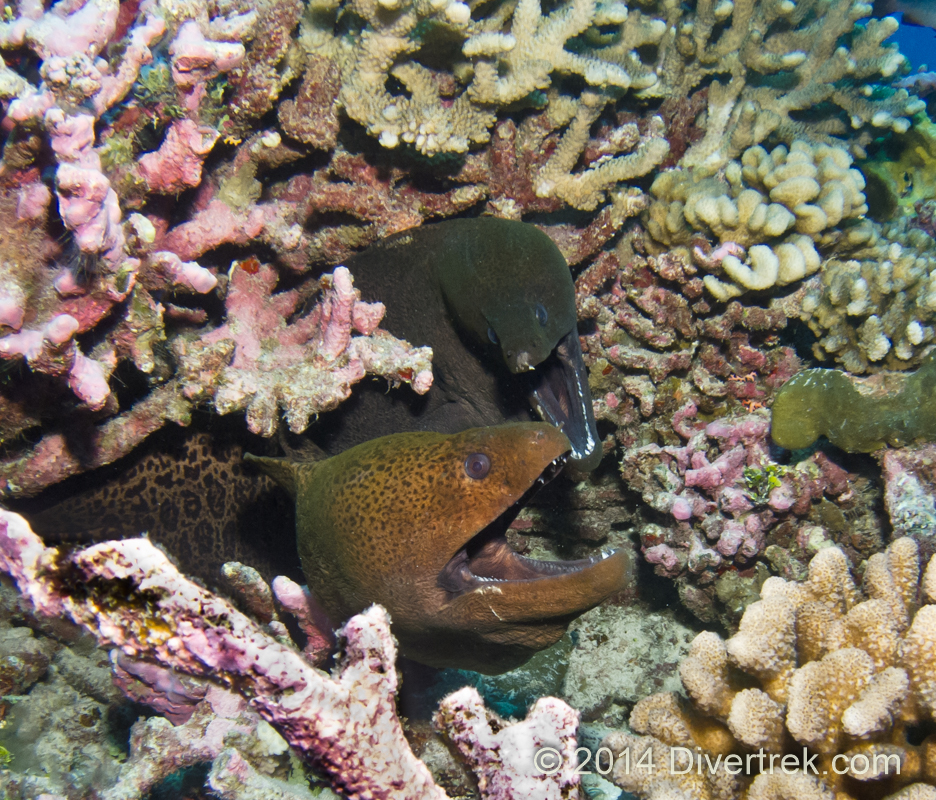 On one of two dives we did here, the bait also attracted other competitors- two Moray eels. Here is a picture of the disagreement between the two. They didn’t harm one another, but there was alot of posturing!
On one of two dives we did here, the bait also attracted other competitors- two Moray eels. Here is a picture of the disagreement between the two. They didn’t harm one another, but there was alot of posturing!
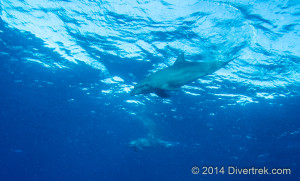
The “lottery” dive is the Dolphin Dive. You get dropped off in the blue around the “corner” (by Tiputa village on the ocean side) where you search the blue listening for tell tale clicks and whistles of dolphins. Dolphins are naturally curious, and if you’re lucky they will come right up to you, looking for “play”. The dolphins know Pitou, and they like and trust him. In one brief encounter, Pitou did a back roll in the water and the dolphin immediately reciprocated in copy-cat fashion.

Unfortunately, the dolphins were quite shy on this trip, so encounters were very brief, and they left as quickly as they appeared. But you can often see them playing in the waves in Tiputa Pass.
Toward the end of one dolphin dive late in the day as the sun was setting we were rewarded with the spectacle of a huge mass of spawning Surgeonfish.
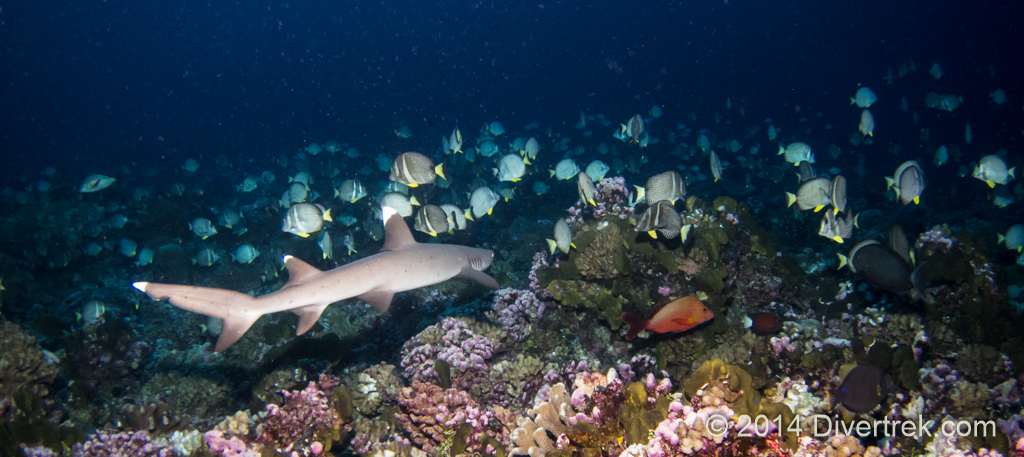
Of course, there’s more than just the “big stuff” at Rangiroa:





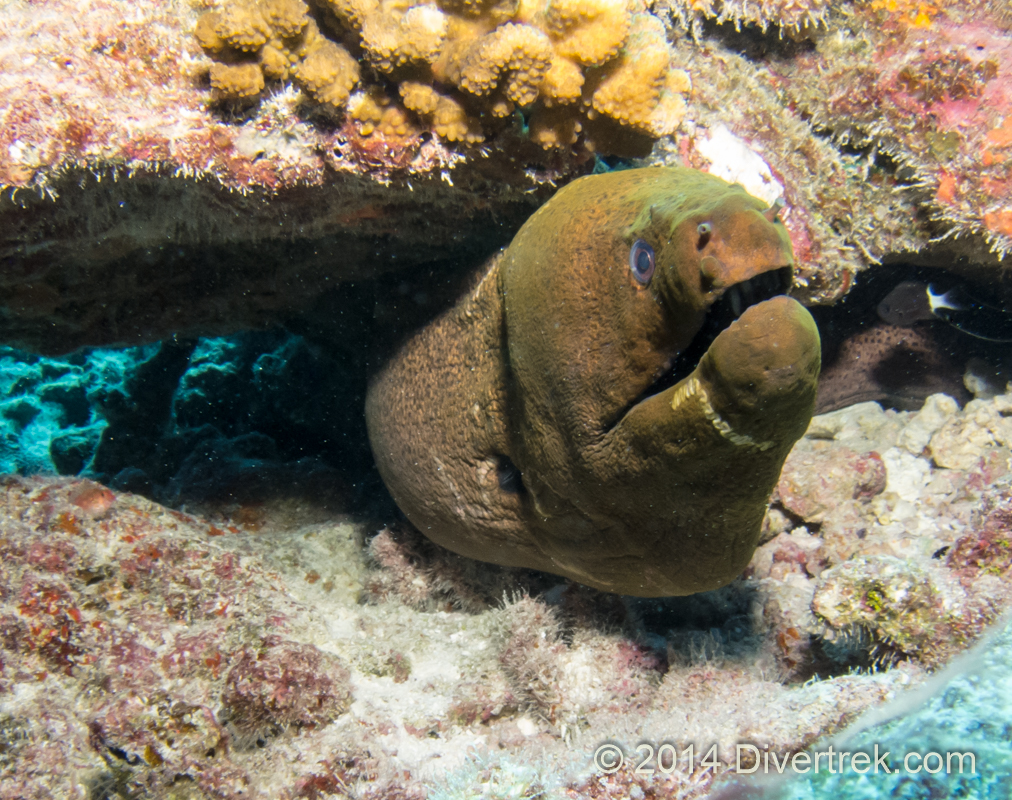
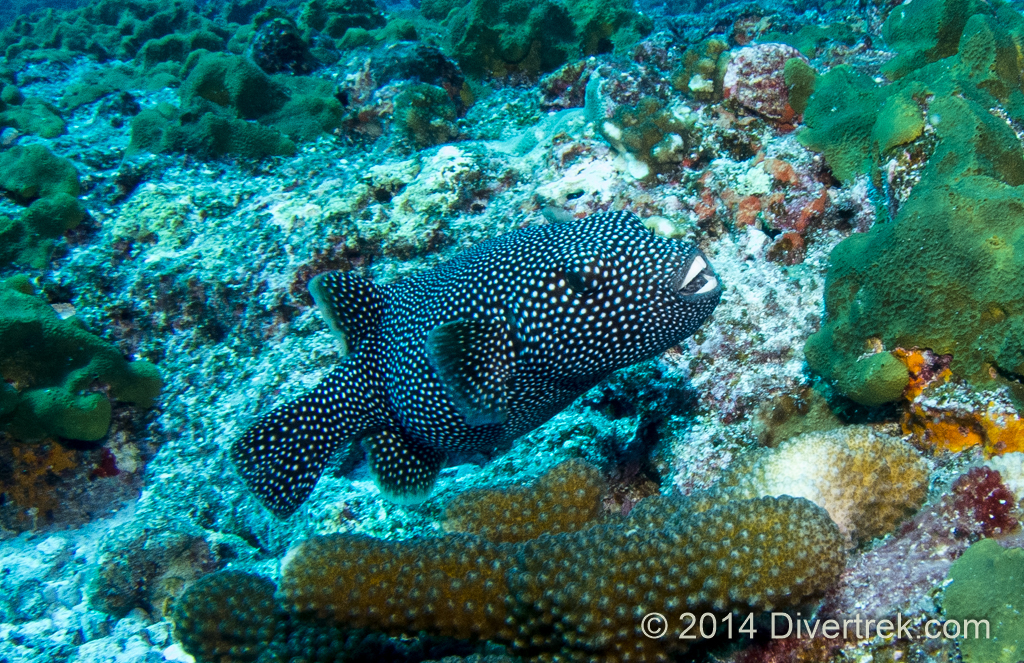

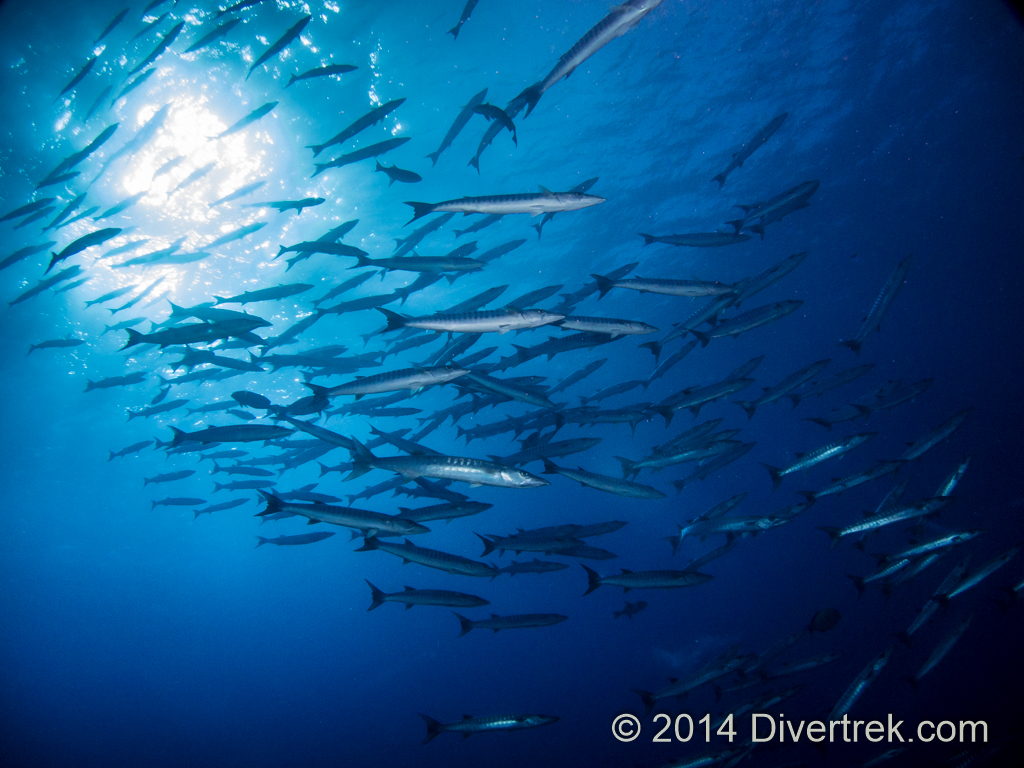
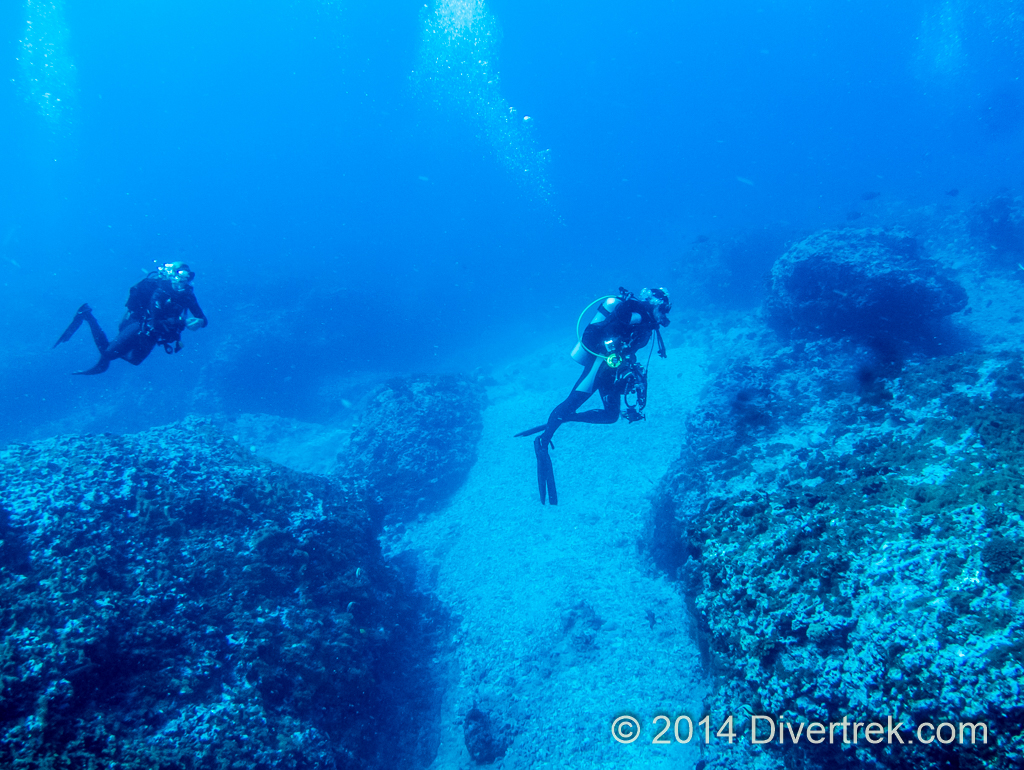
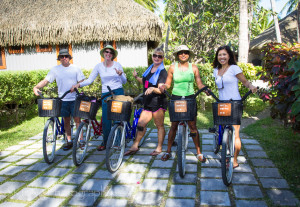
On the last day before the flight out, we rented bikes from the Motel to explore a bit of the Island and the nearby town of Avatoru. Here are some great pics that Kit took:
Tips:
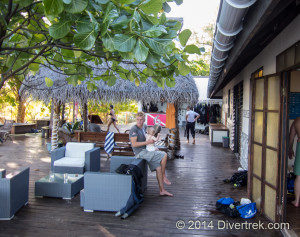
Go to Rangiroa for the bigger animals, and to shoot Tiputa Pass, but not for the coral and reefs. Be sure to time your dives right so that you get to dive the Tiputa Pass proper at the correct time (safely done on the incoming flood). Missing this dive was a big regret of mine. We dove with “The 6 Passengers“, a 5 star PADI resort and National Geographic Dive Center. They are a very busy, accomodating, and well established dive shop. Pitou (Frederick, the General Manager) is a very relaxed, caring, knowledgeable, and accomplished diver-be sure to get him for some of your dives. Boat rides are usually very short, less than 10 minutes to the diving at Tiputa.
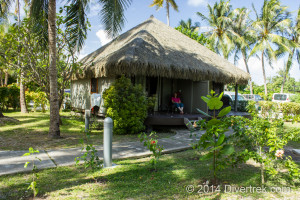
Be aware that Rangiroa and French Polynesia in general are very expensive (about double the cost of living in Canada). For comparison’s sake, a Hamburger and fries will cost about $22 Canadian. We stayed at the Maitai in Rangiroa, which has a meal plan except for lunch. The Bungalows are very comfortable, well-finished, and are in a quite and beautiful setting. There is a general store only a few minutes walk away.
Map of 6 Passengers Dive Sites:
Here is a composite that I made from photos taken off the dive shop wall.

The ocean side is at bottom. Tiputa village is on the Peninsula on map Left, and the dive shop is located on the Lagoon side just off the peninsula on map right. Note the sailboats at anchorage there.
Related Articles:
Grouper Spawning, Fakarava, French Polynesia.
The Shark Wall, Fakarava, French Polynesia.
Diving With Great Hammerheads, Bimini, Bahamas.



